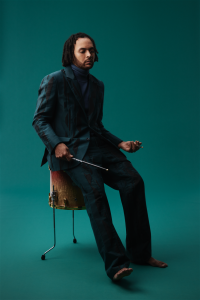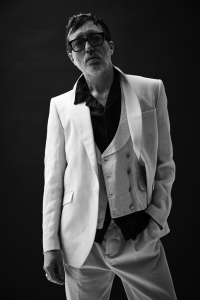The enduring legacy of Kraftwerk

“Our reality is an electronic reality,” noted Ralf Hütter, who, together with the late Florian Schneider, founded Kraftwerk in 1970. From their Düsseldorf production studio Kling Klang, the pair explored a new world of music using synthesizers, drum machines, vocoders and tape recorders, freely mixing sound, contemporary art and performance. Across five decades and eight concept albums, the multimedia project would take on the form of a Gesamtkunstwerk – the German notion of a total work of art.
Influenced by Joseph Beuys and the avant-garde Fluxus movement, Hütter and Schneider maintained a flawless aesthetic and almost complete withdrawal of personality behind their work. Harmonising the artist and technology, or ‘the man machine Kraftwerk’, the eventual quartet invented an electronic groove whose character and mechanical dimension invaded dance floors from the 1970s to today, through disco, electro-funk, house and techno, while exerting a considerable influence on pop, rock and even hip-hop. Beyond visionary electronic music, the two invented a romanticism and technological poetry which drew its essence from the expression, and often exaltation, of modernity.
The repetitive, ‘industrial and popular’ sound of their iconic 1974 work Autobahn perfectly expressed the intimate relationships woven between the individual and the technology of the late 20th century. Some of their most beautiful tracks, such as ‘Trans-Europe Express’, ‘The Man-Machine’ and ‘Computer Love’, evoke universal and everyday emotions related to these advances in travel, home computing, modern communication, the meeting of cultures within a global village, and a growing fascination for the automaton or mechanised human body. They acted out, with great precision, a kind of melancholy and affection towards the formidable developments of the modern information age.
Beyond their influence on British artists such as New Order and The Human League, Kraftwerk’s perfect drum machine rhythms and high-tech equipment resonated deeply with the burgeoning American hip-hop scene (immortalised in Afrika Bambaataa’s 1982 track ‘Planet Rock’) and Detroit techno figures like Juan Atkins, Derrick May and Kevin Saunderson. They found in the art of Hütter and Schneider a vision of the future that allowed them to imagine new paths for Black music. The co-founder of record label Underground Resistance, Mad Mike, best summarised how they were perceived across the pond: “They weren’t Germans; they weren’t white; in fact, we thought they were robots. We had no idea they were human beings till we saw their show.”
Countless tributes, pirate remixes, covers, plagiarisms and parodies have further contributed to making the band a pop-culture totem. Although Schneider passed away last year, aged 73, the band continues to tour, and the influence of their industrielle volksmusik – which David Bowie translated as “folk music of the factories” – shows no signs of fading. Kraftwerk may be granted their wish that the ensemble’s techno pop reaches the eternal state of musique non-stop.
Electronic: From Kraftwerk to The Chemical Brothers is available as a virtual tour at the Design Museum until May 2021

This article is taken from issue 27. To buy the issue or subscribe, click here




